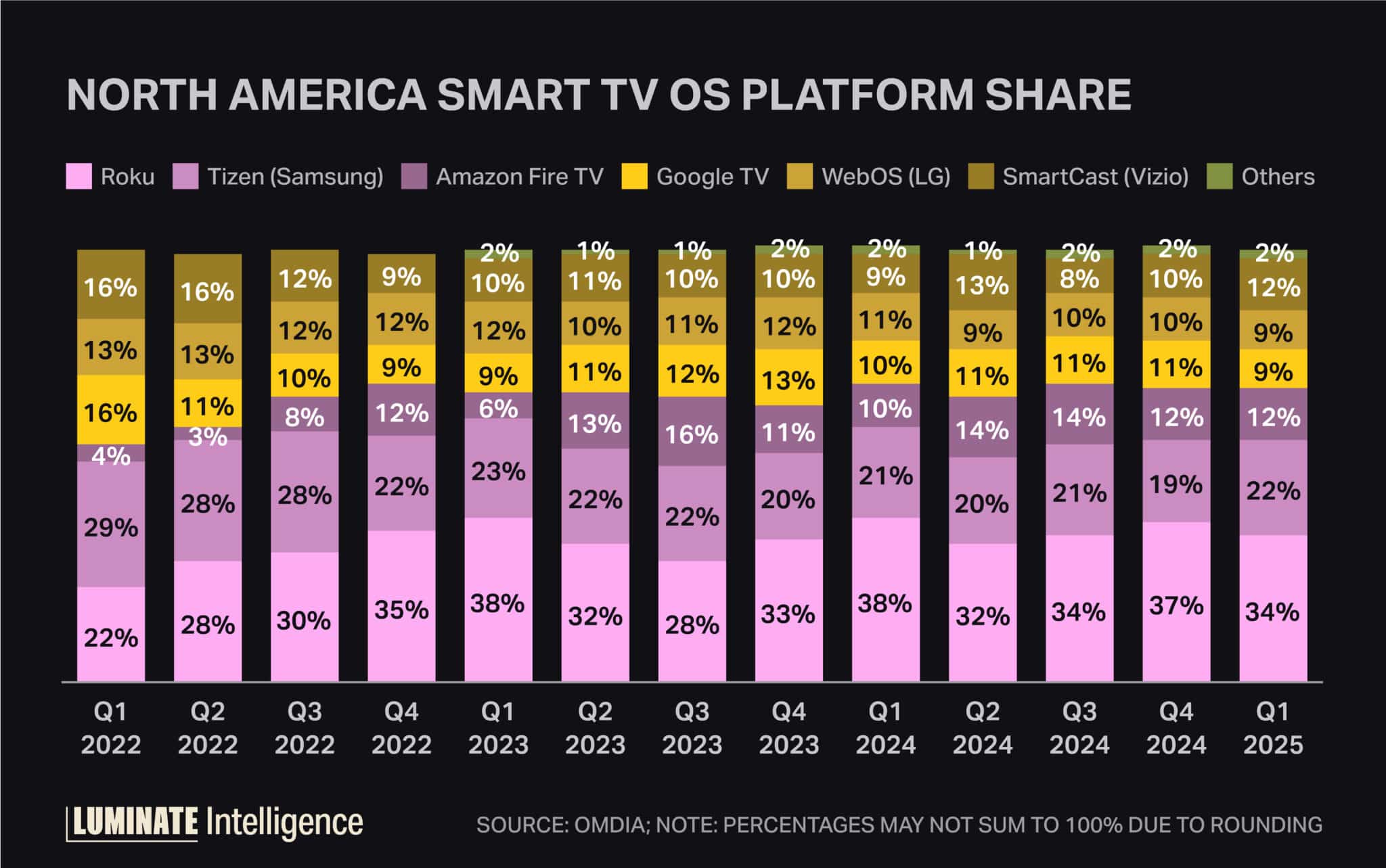The next era of the smart TV is now underway. Earlier this month, manufacturer TCL began rolling out Google TV sets featuring Alphabet’s AI assistant Gemini, along with voice-based features designed to allow for conversational interaction.
AI has been making inroads into the smart TV space for a while now, but this is the most prominent integration so far and likely a precedent-setting move for the industry. With manufacturers and OS developers searching for ways to improve personalized recommendations and content discoverability on their platforms, AI assistants are an obvious solution.
But there’s another motive likely at play here, one that will play an even bigger role in fueling AI integration on the devices: OS monetization.
The Gemini rollout comes at a curious moment for Google TV, which, according to multiple reports, spent the summer downsizing and facing an uncertain future. While parent company Alphabet has never broken out ad revenues for its TV OS, insiders’ accounts indicate the tech giant has struggled with monetizing the platform.
“The company has been spending hundreds of millions of dollars on Google TV every year, but it has yet to break even on those efforts,” The Verge reported in August. “And with costs exploding, the company now finds itself at a crossroads, forced to decide how much it is willing to pay to stay relevant in the smart TV space.”
Meanwhile, as of Q1 2025, Google TV accounted for just 9% of North America’s smart TV OS market, according to data from Omdia. That put the tech giant far behind rivals such as Roku (34%), Samsung’s Tizen OS (22%), Amazon’s Fire TV (12%) and even Vizio’s SmartCast (12%).

It’s therefore not difficult to read between the lines of Google’s messaging on the new AI-powered TVs just hitting the market. It’s telling, for instance, that the company is not so much emphasizing the AI itself as its conversational capabilities — and the hardware that enables it.
As a StreamTV Insider article on the launch noted, one of Google’s key “hypotheses” for the future of TVs “is that they’ll all come with far-field mics,” meaning microphones that allow users to converse with the device from a distance.
The other hypothesis, as Google’s VP & GM of Android TV Shalini Govil-Pai explained to the outlet, is “always on” TV, which is exactly what it sounds like: encouraging users to leave their TVs powered on even when not watching something.
Translation: Google is now selling you TVs it wants you to keep on to listeniing to you at all times, a prime opportunity for the company to level up the well–documentedsurveillance of its users.
How would it benefit Google to commit additional privacy violations? Well, billions of dollars in ad revenues, of course. Just this month, a federal jury found Google guilty of improperly tracking smartphone users’ activity, with the plaintiffs’ lawyers arguing the tech giant used the data “to help sell ads tailored to users’ individual interests — a strategy that resulted in the company reaping billions in additional revenue,” according to the Associated Press. (Google denied these allegations and intends to appeal the verdict.)
It’s therefore hardly a stretch to surmise that the audio collected by those far-field microphones will be leveraged for further ad personalization, especially given Google TV’s monetization struggles.
A multitude of studies have touted the financial benefits of personalized ads over nonpersonalized ones, with more relevant ads seeing more engagement and hence generating more revenue. So the key to turning a profit on Google TV will likely lie in continuing to boost ad personalization as much as possible.
Google may deny this, but the idea that Big Tech is constantly spying on you is no longer a conspiracy theory; it’s a fact of life. And no serious observers of the tech or advertising industries expect ad targeting to recede, with the rise of AI set to enable greater hyper-personalization than ever before.
In other words, Google TV’s leadership may well be right about far-field mics and “always on” behavior driving the future of smart TVs, as more companies are all but certain to follow in its wake, chasing those personalized ad dollars. Ultimately, however, it will be consumers who determine the success of this strategy — if they can be made aware of the potential risks to their privacy.

